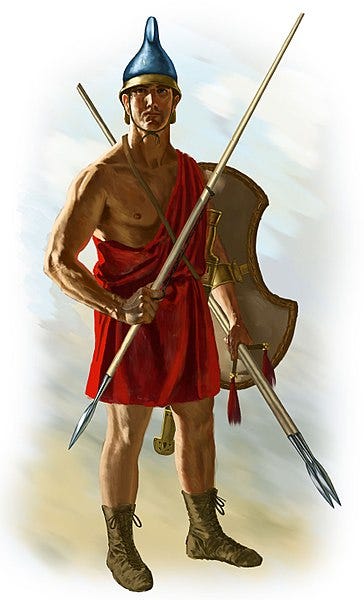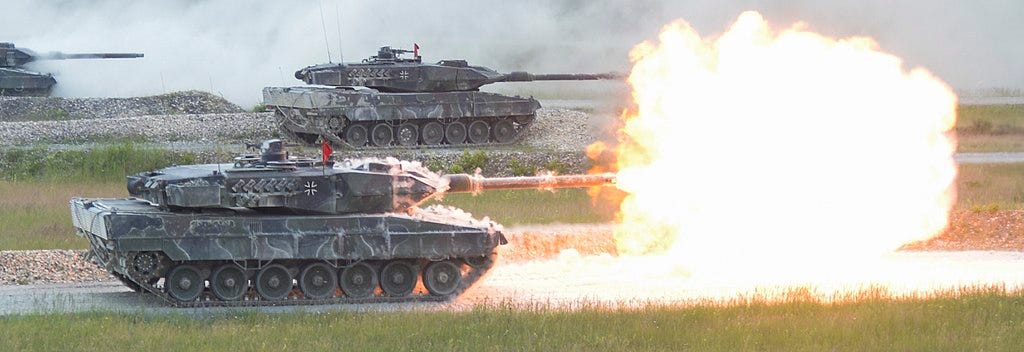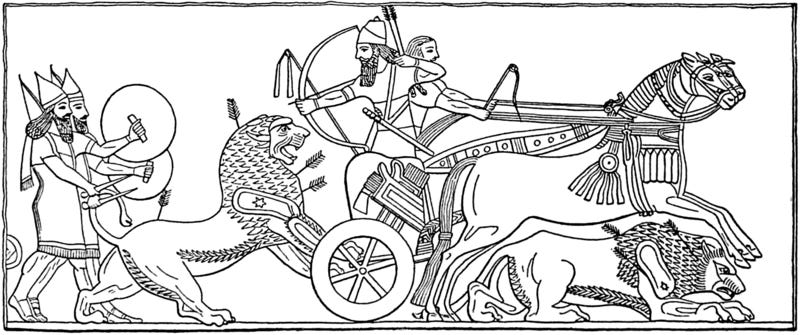World history’s arguably best general ever, Napoleon Bonaparte, was famously skeptical of new military technology. It was not that he was against it as such. He just did not find it that important compared to the strategic mastermind of a great general.
The wisdom of Napoleon might be worth keeping in mind when looking at the Ukraine war, which is now in its seventh month. Both sides have plenty of high-tech weapons. Ukraine arguably has the most advanced weapons, thanks to its friends in the West, but Russia certainly has more weaponry overall. Since Ukraine has more soldiers this is turning out to be a battle of men against machines. Who is winning?
Going forward, backwards
Preciously little information is leaking out from Ukraine’s southern offensive. Partly because Ukraine wants it that way, partly because not much is happening. What can be glanced, from Ukrainian and Russian Telegram channels, is something about the Ukrainian tactics in this counter-offensive ostensibly aimed at re-taking the city of Kherson, the largest Ukrainian city the Russians have hitherto occupied.
The Ukrainians seem to try to emulate the successful defense of northern Ukraine in February and March. Then Ukraine used infantry armed with anti-tank weapons to strike at the outstretched Russian armored columns trying to quickly gain ground. This proved very costly for the Russians who pulled back their troops from northern Ukraine.
There are no outstretched Russian armored columns in southern Ukraine. Instead the Russians have dug in, trying to defend their conquests. The Ukrainians, with plenty of soldiers but few tanks and artillery, have difficulty assailing a fortified frontline like this.
The tactic Ukraine seems to be using goes something like this:
1. Ukraine concentrates what armor and artillery they can spare to one section of the front where they try to make a break-through.
2. When the break-through succeeds they pull back the armor and pour in infantry that try to widen the breach.
3. Crucially, this infantry is armed to the teeth with anti-tank weapons, both Western supplied Javelins and NLAWs and locally produced Stugnas and RPGs.
4. When the inevitable Russian counter-attack comes, the Ukrainians try to knock out as much Russian armor as possible.
The aim for the Ukrainians at this stage is not necessarily to gain ground. Sometimes they can hold onto their frontline break-throughs, sometimes they are driven back. More important is that they inflict heavy losses on Russian tank resources while themselves only taking light losses in infantry. Russia still has a major advantage in tanks and other heavy equipment and degrading that advantage is a core objective for the Ukrainian side.
Panzer aus
There has been infantry anti-tank weapons almost as long as there have been tanks. Even so, infantry equipped with anti-tank weapons seem to have gained increased prominence in the current conflict compared to previously. Why is that?
There are many reasons. One of them is technological advancements. Portable anti-tank robots developed in the West have proved highly efficient at knocking out Russian tanks. But this is only the latest round in a tit-for-tat technological development. When tanks received reactive armor they became more or less invincible to World War 2 era anti-tank weapons of the Bazooka type. The Javelins and NLAWs of today have evened out the playing field once more.
A more important reason might be that the Russians have proved inadept at protecting their tank resources. Tanks are usually seen as an integral part of a combined arms approach to warfare. Tanks are supposed to contribute speed and firepower while infantry protects the flanks and provides a screen that finds threats for the tanks to destroy.
It might also be the case that time has caught up with the tanks. Their success during World War 2 and afterwards might have been to surprise and sheer awe, the Panzerschreck, the debilitating fear of tanks, might have been caused just as much by novelty and ignorance as to reasonable fear of a superior weapon.
If reality and widespread use of anti-tank weapons have finally caught up with the tanks there is an eerily similar parallel from 3000 years ago.
Bronze Age tankers
The Bronze Age had a super weapon surpassing all others: the horse-drawn chariot. This was a light wagon hitched behind two horses. On the wagon were two men, one driver and one archer. This might not sound very impressive but this contraption was totally dominating all battlefields for several hundred years, at least in the Mediterranean region.
To understand the advantages of the chariot one has to pause for a moment and think of archery. Bows and arrows are excellent weapons of war. They were so even more during the Bronze Age due to the fact that bronze was very expensive. This meant that other weapons, such as swords and armor were too expensive to produce in meaningful quantities. In comparison, arrows, which only required a tiny bit of metal for the arrow point, were comparatively cheap.
Archers were great for war, but they had some significant disadvantages. For one, it is not possible to move while shooting an arrow. The up-and-down movement of walking will make all efforts at aiming meaningless. This means that archers have to stand still to shoot, making them easy targets for enemy archers. Another significant disadvantage of archers is that you need two arms to hold a bow, leaving no hands to hold a shield or some similar protection.
The chariot neatly solves both of these problems. The chariot has wheels, making for a smoother ride forward. Smooth enough for the bowman standing in the chariot to fire arrows on the go, with decent accuracy. The bowman is held in place in the chariot with leather straps, meaning he does not need to use his hands to keep in position. He can still not hold a shield but the sides of the chariot were usually high enough to offer some protection. In some chariot configurations there was also a third rider holding a shield to protect the driver and the bowman from incoming projectiles.
In practice this meant that Bronze Age charioteers could approach the stationary enemy at speed, firing a volley of arrows and pull back before the enemy's arrows arrived. It was a fool-proof way of defeating enemy archers. In fact it was so successful that the enemies also adopted chariots in large numbers. Late Bronze Age war turned into giant chariot battles, most memorably at the Battle of Kadesh, when 5000 Egyptian and Hittite chariots confronted each other in 1274 BC.
Even though chariots contain relatively little metal they were still very expensive instruments of war. Being the high-tech machinery of their day they contained some very intricate carpentry and leather working. And it was not only a wagon. The two trained war horses pulling the wagon each cost a small fortune.
In fact we know exactly what a chariot cost back in the day. The source for this is somewhat unexpected. In the bible, more precisely 1 Kings 10:29, it says that a chariot cost 600 shekels and a chariot horse 150 shekels, giving a total of 900 shekels for a chariot and a team of horses. Of course this is not much use if we do not know the value of a shekel. But in Exodus 21:32 we are informed that the standard value of a slave is 30 shekels. If these numbers are to be believed a chariot with two horses was worth the same as 30 slaves.
In practice this meant that chariots were too expensive to make up an entire army. There were always other troops except the charioteers. These were sometimes archers but mostly of the light infantry type. Their role might have been something akin to servants to the, mostly aristocratic, charioteers. They could do guard duty while in camp and help with logistics. In battle, their role was probably to run with the chariots, scout for threats, help fallen charioteers to safety and engage and execute enemy charioteers who had lost their horses.
Down with the old
The Bronze Age empires of the eastern Mediterranean came to a very sudden halt around 1200 BC, called the Late Bronze Age collapse. This collapse was due to the empires being suddenly invaded by unknown attackers who swiftly defeated the empires’ chariot armies and continued to sack and burn most of their cities. Historians are in total agreement concerning the military defeats of the Bronze Age empires. However, there is some disagreement as to who was attacking the empires and how they could defeat their mighty armies seemingly without difficulty.
The very fact that history has no clear picture about who the attackers were, combined with the fact that the attackers did not conquer, only plunder and destroy, indicates that the attackers were not other advanced empires but rather rough barbarians that for some reason possessed the ability to defeat mighty empires.
The most probable reason for this, at least in my opinion, is that the chariot armies of the Bronze Age empires were defeated by light infantry of the type they were always having around. This major historical shift was not due to new technology, only new tactics.
The light infantry of the late Bronze Age usually carried spears or javelins (throwing spears) and a shield. These were inexpensive weapons requiring a minimum of scanty metal resources.

A spearman is no match for a charioteer. The bow of a charioteer can shoot longer and more accurately than any spearman can throw a javelin. Chariots are also much faster than infantry can run.
Despite these obvious disadvantages, spearmen have some advantages as well, especially compared to the other infantry type of its day: the archer. An archer with a bow can, just as the charioteer, shoot longer and more accurately than it is possible to throw a javelin. But the spearman has two advantages; one is that a javelin is thrown with only one hand, meaning the spearman has the other arm free for carrying a shield or a similar protection. It is also possible to throw a javelin on the move, in fact that is the way most javelins are thrown. A spearman can move and fire at the same time, something that a bowman cannot.
Firing missiles while moving and at the same time having some sort of defense sounds very much like a chariot. And the Bronze Age spearmen really were a lot like chariots in their abilities. To be sure, a chariot was superior to a spearman in almost every way. But a chariot was expensive and a spearman was cheap.
Tactics 1 – Technology 0
The great innovation enabling the Late Bronze Age collapse was no new feat of technology. It was simply the application of a new form of tactics. At around 1200 BC, the numerous spearmen working as auxiliaries in the chariot armies came up with the idea that they could defeat their masters if they had sufficient numbers. When this turned out to actually work the knowledge spread like wildfire and soon the chariot armies of the Bronze Age empires were fighting for their lives.
Exactly how the lightly armed spearmen defeated chariot armies is not known. But the most likely version is that they used superior numbers to simply swarm the chariots. As long as the spearmen could close in on the chariots the latter were quite vulnerable. Given that the spearmen had a local numerical superiority the chariot would have been unable to engage and destroy all enemies, leaving some who reached within javelin distance and destroying the chariot instead.
These tactics are surprisingly similar to the anti-tank warfare in Ukraine. While a single foot soldier has neither the movement nor the firepower of a tank, a large number of foot soldiers are simply too numerous to all be spotted and engaged by a single tank. If these foot soldiers also have potent anti-tank weapons then the tank is in serious trouble.
The next Iron Age?
Tanks are still useful on the modern battlefield as Ukraine’s use of limited numbers of tanks show. But chariots did not disappear in 1200 BC either; they continued to fulfill different roles for at least another thousand years. Roles that did not support an entire societal system, like it had in the late Bronze Age, but still a role.
The Russo-Ukrainian War will certainly lead to a major re-evaluation of military doctrines. It is more doubtful whether it will lead to societal collapse and the birth of a new era. Doubtful but not totally impossible. The Ukrainian use of infantry anti-tank and anti-aircraft weapons has shown that armies do not need to be big and filled with expensive weapons to be reckoned with. Modern weaponry and high morale can take you far.
What the Ukrainians are currently proving is the viability of small states. A small nation might not be able to outright defeat an enemy or even defend all its territory but as long as they can inflict significant casualties on the aggressor the cost of military expansionism will be too high to make it worthwhile. As long as this principle is upheld small states will be just as militarily secure as larger and better armed states.
The collapse of the late Bronze Age empires led to a period of turmoil before new state entities appeared. These new states were much smaller than the empires they superseded, most notably the city states of Greece. These small states would struggle, compete and evolve straight into the Iron Age. Small scale and the competition that comes with it have served the Western world well. Russia’s invasion of Ukraine has done nothing to dispel the lessons learned 3200 years ago.
Most of the information concerning the Late Bronze Age collapse in this article comes from the book The end of the Bronze Age by Robert Drews.





This is an excellent article with a cogent point about the parallels between ancient javelin use to overcome cavalier and modern anti-tank use to overcome mechanized cavalry. It made me remember US Marine Clarke Savage’s point that technology with the accuracy of rifle and squad level tactics have changed the field in favor of individuals and small units of the Ancient Greek style. He writes, “an individual soldier in a massed Napoleonic unit was like a cog in a machine, whereas in the current patrolling era, each soldier has more freedom and ability to demonstrate individual prowess” (29). You might like his work that discusses martial considerations and the individual. “King of all Things” (https://www.amazon.com/King-All-Things-Martial-Purpose/dp/B09RFWSFX7/ref=mp_s_a_1_1?crid=3EM1O3Z67E2WC&keywords=king+of+all+things+clark+savage&qid=1681928772&sprefix=king+of+all+thinfs%2Caps%2C260&sr=8-1).